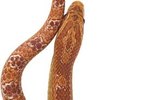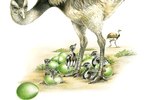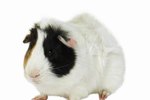As omnivores, ostriches in the wild eat a variety of plants and animals, including seeds, roots, grasses, insects, rodents and lizards. Ostriches in captivity are a different story though. To provide the proper nutrients for a healthy diet, captive ostriches are usually fed a diet consisting primarily of commercial feed designed for ratites, or flightless birds. Ostriches in the wild and in captivity also eat sand and small stones to help grind up their food because they do not have teeth.
Commercial Ratite Feed
Commercial pelleted feeds are formulated with the protein ratio and vitamins and minerals needed by ratites for proper bone and body growth, and overall performance. Ostriches require a relatively high-protein diet. According to Dr. James Hermes of Oregon State University's Department of Animal and Rangeland Sciences, most ostrich farmers provide a feed that is 17 to 24 percent crude protein to growing and brooding ostriches, and a feed that is 22 to 23 percent crude protein to laying ostriches. Commercial feeds are available in starter, grower and mature formulas.
Tips
The Nelson Road Veterinary Clinic in Longmont, Colorado recommends a diet of at least 80 percent commercial ratite feed.
Feeding Hatchlings and Chicks
Hatchlings are able to subsist on the yolk sac initially and may not eat for 24 hours. For the first three weeks of life, chicks should have full-time access to a commercial starter feed with at least 26 percent crude protein. Between 3 and 8 weeks old, chicks should be fed as much starter feed as they can eat in a 20-minute eating session twice a day. From 8 weeks old until maturity, which is around 2 to 3 years of age, chicks should be fed commercial grower feed twice a day.
Tips
It's not unusual for young chicks to turn away from food. Placing them with chicks who are already eating may inspire them to join in on a meal.
Adding Grains, Fruits and Vegetables
Corn, chopped fresh carrots, chopped fresh beets and other grains, fruits and vegetables should be limited to less than 20 percent of an ostrich's diet, according to The Nelson Road Veterinary Clinic whose veterinarians believe that pelleted feeds are the best. Ostriches should, however, have access to either succulent grazing forage or alfalfa pellets to fulfill their need for fiber.
Warnings
- Large pieces of fruit and vegetables can get caught in an ostrich's mouth or neck.
- Fresh foods that contain oxalic acid, such as spinach and chard, impair the absorption of calcium and cause ostriches to have leg problems.
- Too much, or too little, protein, calcium, phosphorus and other minerals can cause ostriches to have leg problems.
- Eating too many high fiber foods can block and ostrich's intestine.
- Large pieces of fruit and vegetables can get caught in an ostrich's mouth or neck.
Providing Water
Ostriches' organs and tissues are able to absorb water from the moisture in their plant food, so they can go may days in the wild without drinking. They do prefer to have 1 to 2 gallons of water a day available though. In captivity, ostriches should be provided a 5 to 8 inch deep watering pan that is 24 to 30 inches wide.
Tips
Requirements for ostrich care vary by region of the country. Consult your veterinarian for specific feed recommendations.
References
Writer Bio
Laura Payne has been freelance writing for several online publications in her free time since 2006. She holds a Master of Arts in linguistics from Wayne State University and a Bachelor of Arts in journalism from Oakland University. Payne teaches linguistics classes at both universities on an adjunct basis.





